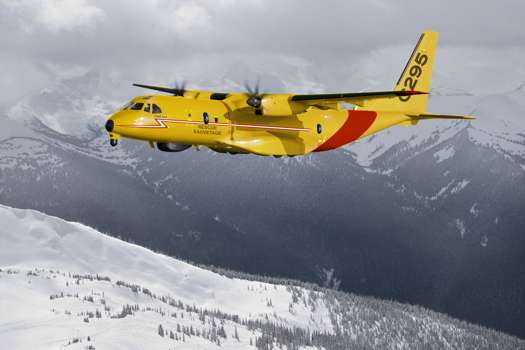Estimated reading time 6 minutes, 40 seconds.
With a total of 160 aircraft sold and 116 delivered to date, Airbus’ Pablo Molina believes the C295 offers the most cost-effective FWSAR choice for Canada. Airbus Image
After more than a decade of touting the C295 as the ideal replacement for Canada’s aging fixed-wing search and rescue (FWSAR) aircraft, Pablo Molina’s team in Ottawa is racing at full speed to meet the Sept. 28, 2015, government deadline for industry proposals.
Molina, who is head of Airbus Military Aircraft Canada, is the fourth representative the OEM has appointed to lead the group that is promoting the Spanish-built, twin-turboprop airlifter as the country’s next FWSAR platform. When Skies met with Molina at the 2015 Aerospace, Defence and Security Expo in Abbotsford, B.C., he was about to open a larger office in Ottawa to accommodate his growing team.
Molina took the Canadian posting last October, shortly before the government issued its official request for proposals (RFP) on March 31, 2015.
“We are in the middle of the battle right now,” he said on Aug. 6. “We are finalizing all the documentation to answer this very complex RFP. We have a significant team made up of our employees as well as our Canadian partners.”
He estimated that the C295 proposal is currently about 80 per cent complete. “Obviously, some of the aspects of the proposal are more mature while others are still under development,” Molina explained. “I have to say that the level of complexity of this proposal is remarkable, not only in terms of the actual work to be done in the response, but also in the industrial setup that we have to put in place to respond in a proper manner to the Canadian government.”
The C295 group includes not only Airbus Defence & Space as the OEM, but also several Canadian companies that have been selected as program partners. The list includes in-service support (ISS) partner Provincial Aerospace (PAL); CAE as the training integrator; engine manufacturer Pratt & Whitney Canada; L-3 Wescam as the manufacturer of the electro-optical infrared (EO IR) gimbal carried by the SAR aircraft; and Vector Aerospace, which will provide additional ISS as an Airbus subsidiary.
Molina said his team’s proposal will make it clear why the C295 is the best choice for Canadian FWSAR. He highlighted two reasons in particular: technical ability and cost effectiveness.
“Technically, we are the best solution for the RCAF. We are the market leader in our segment and we have a solution that is already flying in five countries,” he explained. “This mission system has more than 30 years of history and is company owned, so the same company is providing the platform and the mission system. This is the optimized solution.”
Molina added that all customer modifications are installed right on the assembly line, which saves the cost of shipping green aircraft elsewhere for customization.
“We pre-engineer those solutions and introduce them in the normal production phase of our final assembly line,” he added. “Once the aircraft goes out, it goes with the mission system and the sensors already integrated.”
With a total of 160 aircraft sold and 116 delivered to date, Molina believes the C295 offers the most cost-effective choice for Canada. “The number of aircraft we have produced allows us to be sure of the ISS cost of the platform,” he continued. “So, we are able to commit to a figure, and this is a model we are used to. Airbus is devoted to not only the platform sale, but also to the ISS. We are committed to long-term relationships and performance-based contracts with our customers.”
According to Molina, that commitment is evidenced by the number of repeat aircraft orders. Of the 23 current operators of the type, he said 11 have ordered additional C295 aircraft. As well, none of the OEM’s current customers have cancelled their performance-based contracts.
If chosen by Canada, Molina expects the new aircraft will integrate smoothly into the Royal Canadian Air Force. “The experience we have had with other air forces to start operating the aircraft has been really, really good,” he said. “From delivery to the start of initial operations takes about a month. Then, you start building up the rest of the tactical capabilities. But, working closely with the air forces, we have been able to deliver ISR [intelligence, surveillance and reconnaissance] capabilities in less than eight months.”
He added that very complex versions of the C295 are usually delivered to customers in about 36 months. However, the proposed Canadian version is considered to be fairly straightforward. “This aircraft is being fitted with a 360-degree belly radar, glass EO IR mounted in the nose, and several other systems that are not complex. I cannot be more specific than that, but it will be less than 36 months [to first delivery],” said Molina.
But before any further talk of delivery, the C295 team will be focused on finalizing its proposal for the Canadian government. Molina said his staff is aiming to have the extensive document completed by mid-September, leaving them a couple of weeks to polish their presentation.
Once it is complete, the group will face a new challenge: delivering the proposal. “The document is going to be very big,” laughed Molina. “There are logistical implications. We will have to rent a van to deliver the printed copies.”

